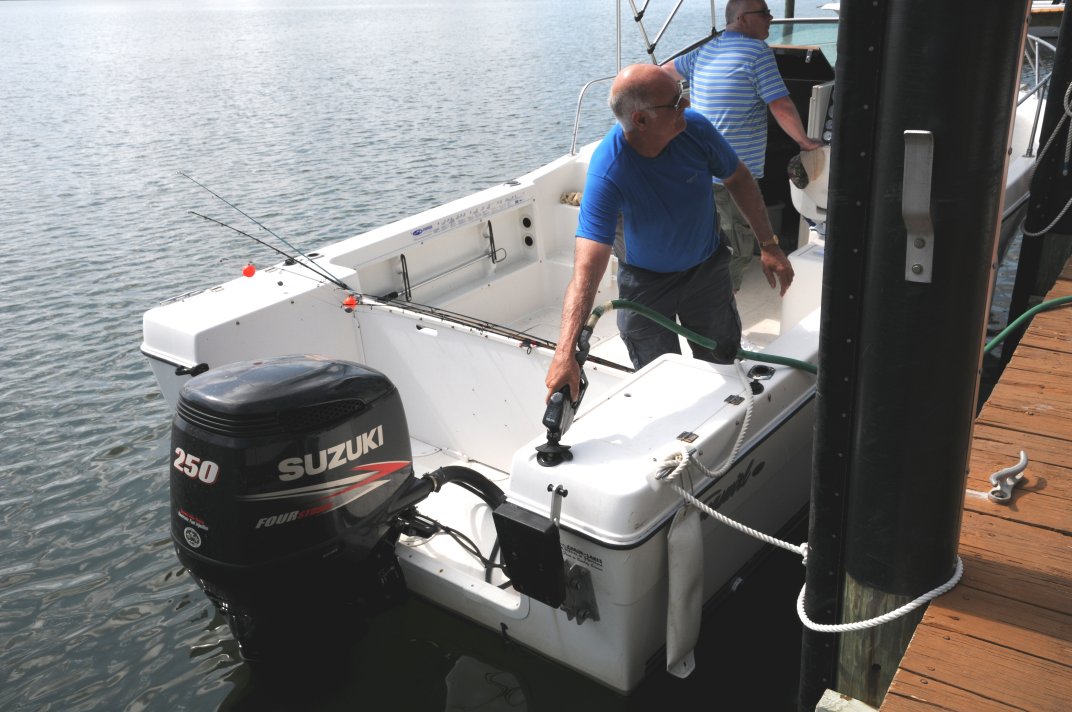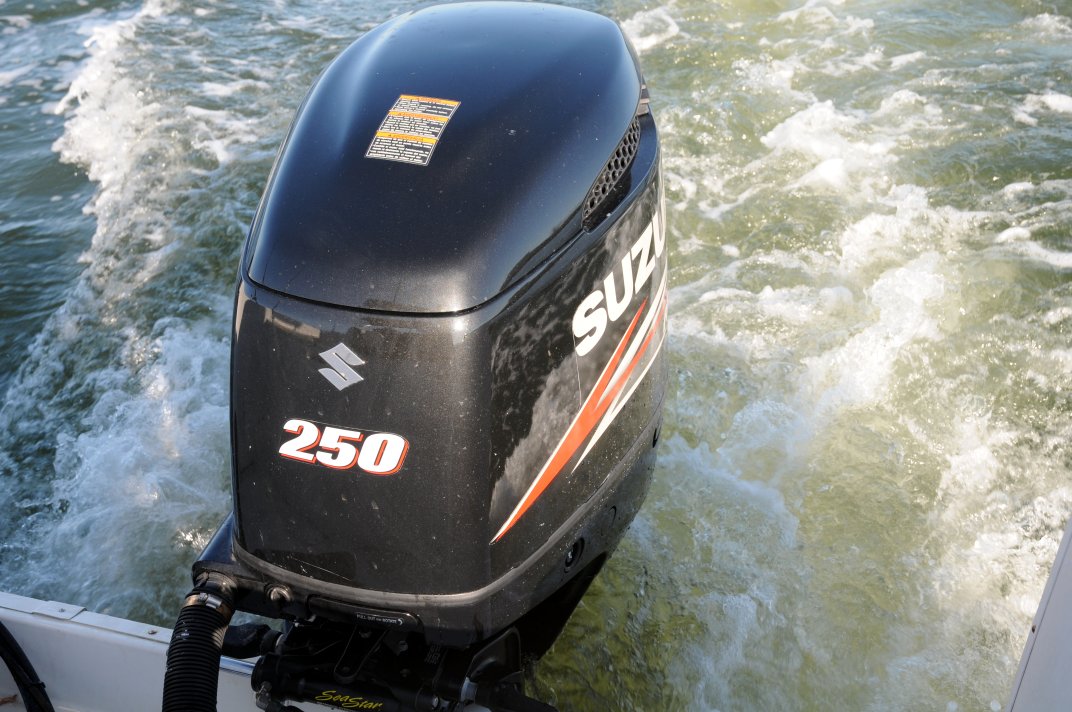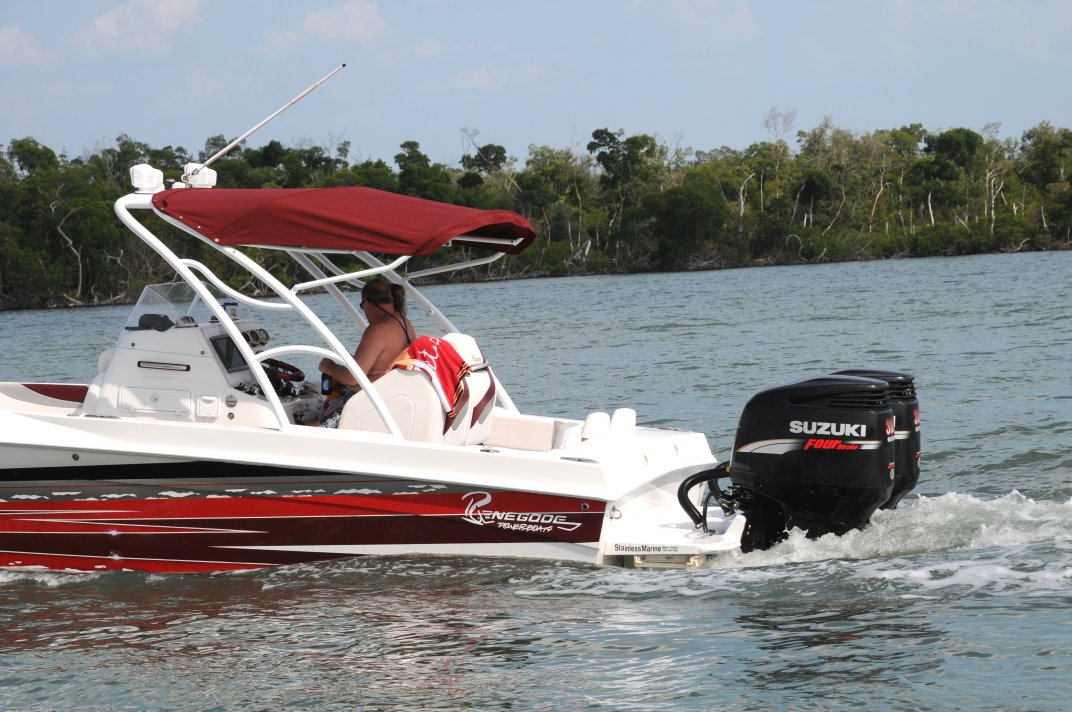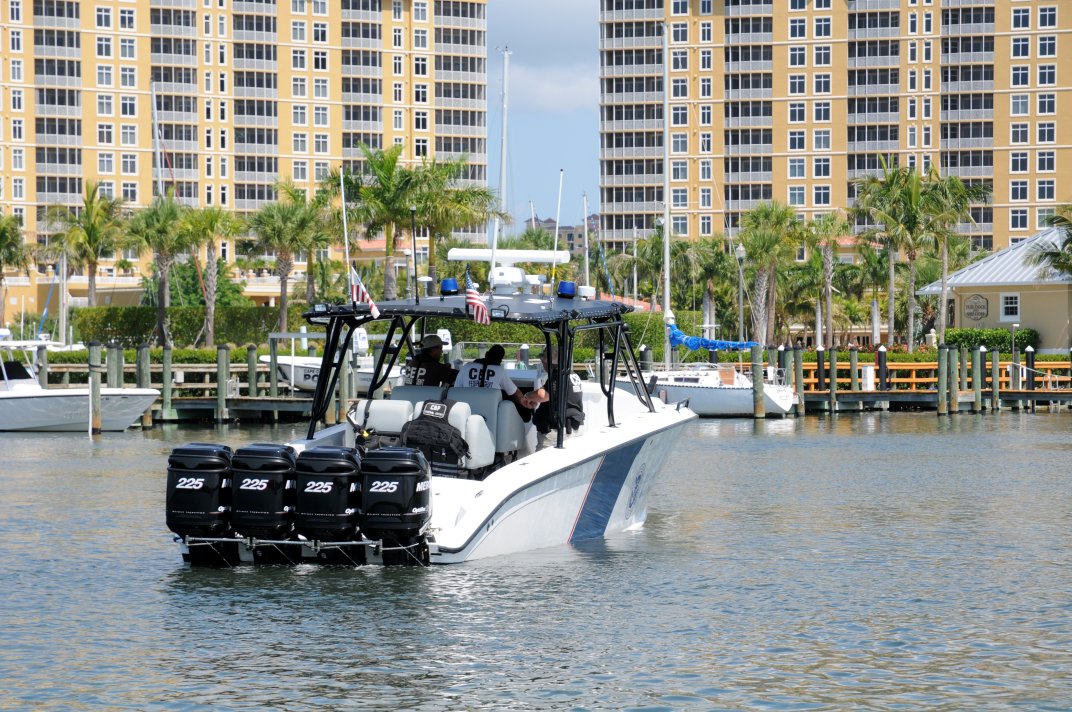Suzuki DF250 Review

Though we're not quite there yet, it's probably just a matter of time before some UK small boaters start putting 'monster' outboards onto the backs of trailed and more especially, some of the smaller moored boats in the way that seemingly everyone does over on the other side of the Atlantic. My first planing boat had a 35 on the back which in the 1980's seemed huge. Then the trend crept up to 50 and later 60 hp. But now even our Warrior 175 with its Suzuki DF90 is starting to look under-gunned.
I recently saw one boat stateside with four 225's on the back. That's 900 hp – a full order of magnitude more than we currently have. I've even boat fished guided freshwater trips there, one of which was on the surface water drainage canal system serving Miami, with 225 hp on the back, and we ran it back quite literally at full bore. So these smaller boats, in terms of size, could certainly take a lot more power than at present, though some would undoubtedly require transom construction adjustments to take the extra stress to comply with their guarantee.

It is going to catch on sooner or later over here. The advantages obviously are the ability not only to reach increasingly distant marks more quickly, but also to flit between marks more readily and still have sufficient time for a really good try at each, which for professional guides, many of whom in the US fish from trailed boats, is absolutely essential. On the down side, conditions don't always allow what is theoretically possible. Equally import considerations must also be balance weight, unit cost, and fuel consumption to deliver the maximum power.
It's no good tooling up for a job if you are either unable, or unwilling to do it on the grounds of cost, which to some extent is where the Americans win out in paying less than $4 (approx £2.50) a gallon for their fuel. And still they complain. So it goes without saying that making that sort of upward power shift needs to take account of a number of cost related considerations, which is what Dave Devine and I were able to do recently when we had the use of Warrior co-director Paul Haynes 26 foot boat 'Striper' with its Suzuki DF250 for a couple of weeks out from Cape Coral, Florida

One of the things we became immediately aware of was the drop in fuel consumption you get when the boat is not up and running on the plane. Legally enforced speed restrictions for many miles coming out of our mooring at Tarpon Marina instantly turned our fast planing boat into a water displacing 'gas guzzler'. So unless you have both the intention as well as the need for such power, better to go with something smaller and less thirsty. Running at around 3,500 to 4,500 rpm helps mix pace with economy, with the remaining 1,500 to 2,000 rpm in reserve for when you can or might occasionally want to deploy it.
One of the things that has most impressed me with Suzuki outboards, particularly our DF90 which we've had for over two years, is its instant no hesitation starting. No priming, no manual choke. Simply turn the key and it's away. Equally impressive is the anti corrosion treatment given to the body work. But it's the horse power to unit weight ratio that should impress the most. Less weight means better balance and potentially better performance related fuel economy, and the DF250 boasts these same features.

This is the worlds the world's first production 250hp V6 four stroke outboard, its 3,614 cc engine delivering a 69hp per litre power to displacement ratio, which is marketed as the greatest ever seen in the four stroke category. At 580 lbs in weight, it also reputedly delivers the best power to weight ratio in its class, making it the lightest and most technically advanced 250 hp 4-stroke unit currently available. Lean burn technology is a further impressive feature, as is its corrosion resistance, both inside and out, with great things also being said of its marinisation. But arguably, it's that extremely low 2.29:1 gear ratio that adds most to its performance, facilitating a much bigger prop for quicker acceleration and maximum pace. Obviously, many factors including hull design, gross laden weight and marine growth on the underside of a hull, along with engine set up and maintenance, are determining factors in pace and fuel consumption, which is true across the board regardless of engine make. The ability of any given boat to take such a huge (to us in the UK anyway) power unit must also be factored in, as must the recommended retail price tag of £19,500, which is almost double that of our DF90. On the other hand, it's more than twice the engine. As they say, you only get what you pay for in this life, and I am confident that outboards in this category and maybe even bigger are not that far away for some aspects of small boat fishing here in the UK.
SEE THE VIDEO VAULT –Suzuki DF250